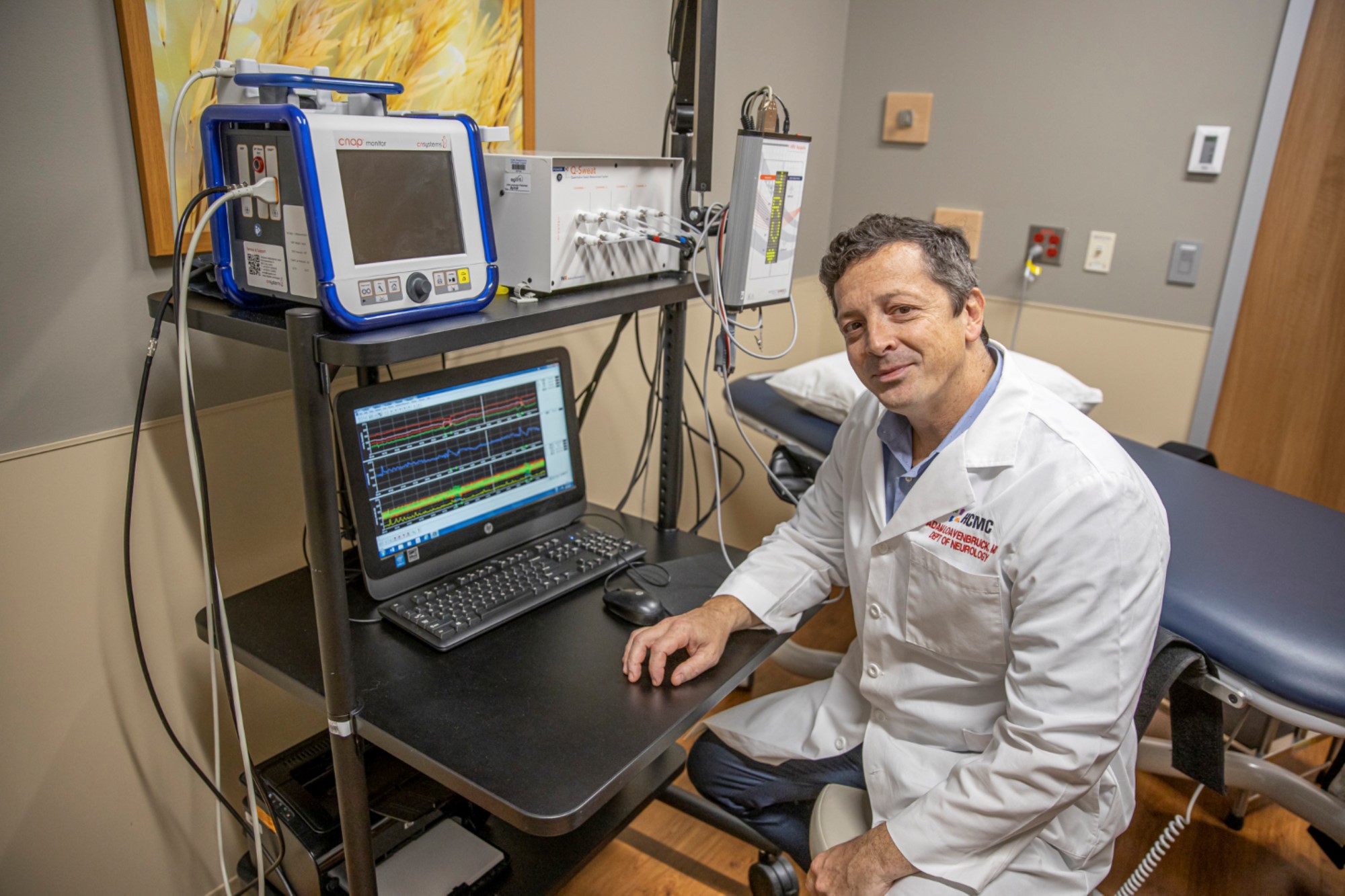
Autonomic Testing
Diagnosing the autonomic nervous system
Autonomic testing is a diagnostic tool that tests the division of the peripheral nervous system called the autonomic nervous system (ANS). The ANS regulates the functions of our internal organs automatically (autonomously) without conscious effort. Examples of vital processes that are regulated by the ANS include heart rate, blood pressure, sweat response, and digestion.
Symptoms of autonomic dysfunction include:
-
Dizziness
- Lightheadedness
- Head rush
- Vertigo
- Fainting
- Loss of consciousness
- Nonepileptic spells
- Burning, numbness, tingling or prickling of hands and/or feet
- Overheating
- Absent or excessive sweating
- Heart racing
Autonomic testing is made up of four tests:
Heart rate deep breathing test (HRDB)
This test measures changes in your heart rate and blood pressure as you inhale and exhale deeply.
Valsalva maneuver
This test consists of blowing air against resistance for 15 seconds. Changes in your heart rate and blood pressure are measured before, during and after the test.
Tilt table test
While lying securely on a table, you will be tilted from a horizontal to a vertical position (0-80 degrees). Heart rate and blood pressure changes are measured before the tilt maneuver.
Q-Sweat test
A recording apparatus will be attached to your arm and leg. This will measure how much you sweat in response to stimulation of the skin.
How do I prepare for my test?
- Bathe or shower on the day of the test. Wash arms and legs well to remove body oils. Do not use any lotions or creams.
- Wear comfortable and loose-fitting clothing.
- Please tell the provider about easy bruising, skin infections, or if you have pacemaker or latex allergies.
- Please tell your provider if you are taking any of the following: blood pressure medications (e.g. Lisinopril, atenolol), anticholinergics drugs (e.g. antidepressants, over the counter cold remedies, antihistimines) or pain medication (e.g. Vicodin, Percocet).
- No coffee, nicotine or alcohol 8 hours prior to the test.
The whole test takes about 1.5 hours. You should be able to go back to your normal daily activity after the test. There is a possibility that the Q-sweat test sites may have slight redness for a short amount of time. They should return back to normal within 8 hours.

Watch and listen to Dr. Adam Loavenbruck's YouTube video on autonomic testing.

